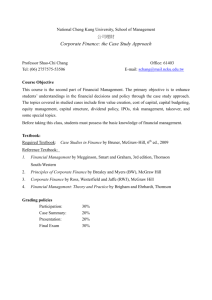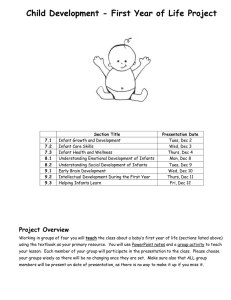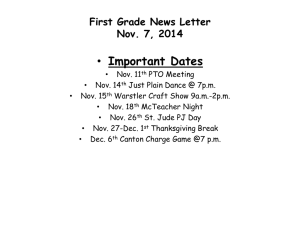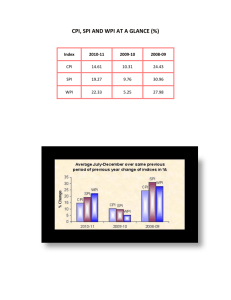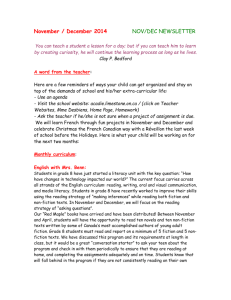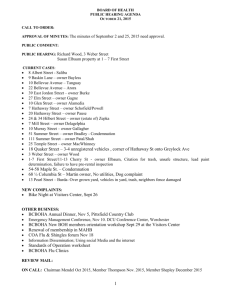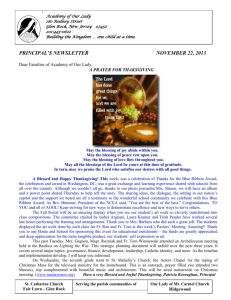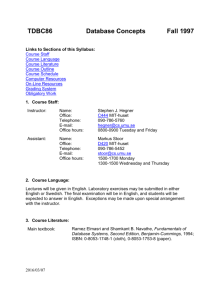Example of English 11 Project based lesson
advertisement
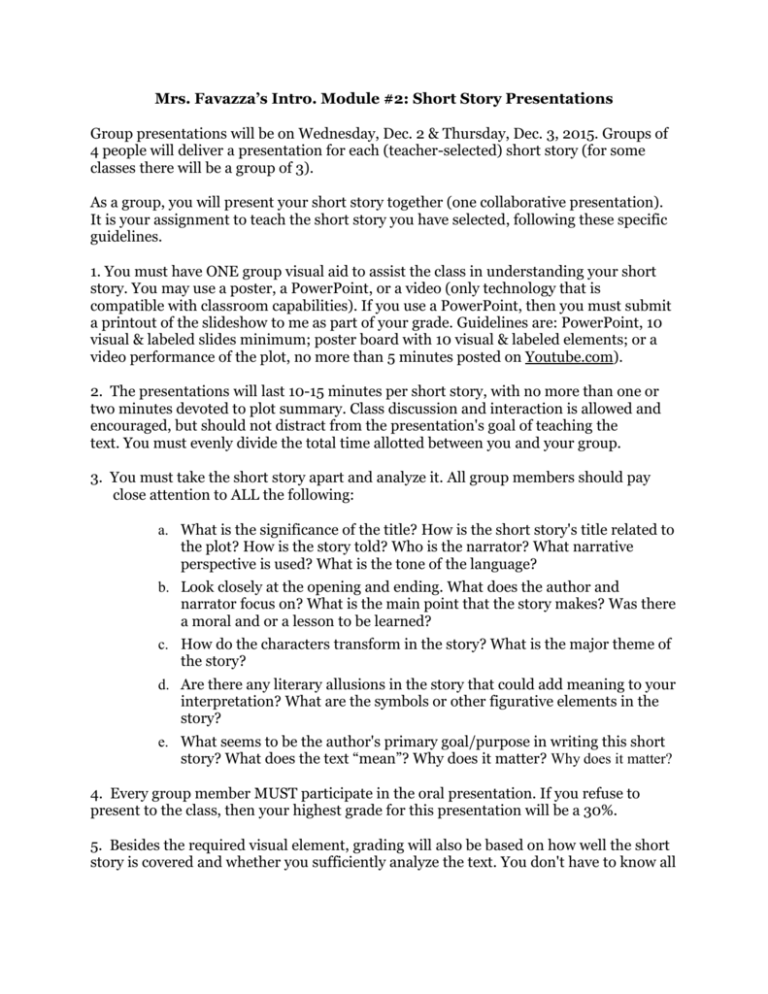
Mrs. Favazza’s Intro. Module #2: Short Story Presentations Group presentations will be on Wednesday, Dec. 2 & Thursday, Dec. 3, 2015. Groups of 4 people will deliver a presentation for each (teacher-selected) short story (for some classes there will be a group of 3). As a group, you will present your short story together (one collaborative presentation). It is your assignment to teach the short story you have selected, following these specific guidelines. 1. You must have ONE group visual aid to assist the class in understanding your short story. You may use a poster, a PowerPoint, or a video (only technology that is compatible with classroom capabilities). If you use a PowerPoint, then you must submit a printout of the slideshow to me as part of your grade. Guidelines are: PowerPoint, 10 visual & labeled slides minimum; poster board with 10 visual & labeled elements; or a video performance of the plot, no more than 5 minutes posted on Youtube.com). 2. The presentations will last 10-15 minutes per short story, with no more than one or two minutes devoted to plot summary. Class discussion and interaction is allowed and encouraged, but should not distract from the presentation's goal of teaching the text. You must evenly divide the total time allotted between you and your group. 3. You must take the short story apart and analyze it. All group members should pay close attention to ALL the following: a. What is the significance of the title? How is the short story's title related to the plot? How is the story told? Who is the narrator? What narrative perspective is used? What is the tone of the language? b. Look closely at the opening and ending. What does the author and narrator focus on? What is the main point that the story makes? Was there a moral and or a lesson to be learned? c. How do the characters transform in the story? What is the major theme of the story? d. Are there any literary allusions in the story that could add meaning to your interpretation? What are the symbols or other figurative elements in the story? e. What seems to be the author's primary goal/purpose in writing this short story? What does the text “mean”? Why does it matter? Why does it matter? 4. Every group member MUST participate in the oral presentation. If you refuse to present to the class, then your highest grade for this presentation will be a 30%. 5. Besides the required visual element, grading will also be based on how well the short story is covered and whether you sufficiently analyze the text. You don't have to know all the answers, but you must assert a reading of the text. You must effectively explain how you read the text based upon your individual analysis. 6. Individual Requirements: Students’ analyses will be graded individually; however, groups will share the visual aid grade (so all group members should have a stake in its completion). Each of the four elements for each member will be 1-paragraph (6-7 sentences; aside of citations) in length. Each of the four elemental paragraphs must be labelled and contain 2 (short story specific MLA citations (see ex. below). You may NOT cite any other sources; therefore, you do not need a Works Cited page. MLA example: “There was nothing he couldn’t do, nothing” (Lessing 3)! ALL individual analyses are due on Turnitin.com by 11:59PM, Dec. 1. Work turned in class and/or handwritten work will NOT be graded. Late work is NOT accepted. You must have a copy of your paper or an index card with bulleted points to discuss for the oral presentation. If you are absent, then it is still your responsibility to turn in your work electronically (all stories are online & handouts are on Schoology) on or before the due date and you will present to the class upon your return (only for excused absences). Group Member #1 is responsible for: (see definitions in R1-R19 in textbook) *Synopsis *Point of view *Epiphany *Character development (all); foil, flat, static, dynamic; dialogue; vernacular Group Member #2 is responsible for: (see definitions in R1-R19 in textbook) *Settings (time & place) & imagery *Figurative language: metaphors & similes *Tone & mood *Title significance & plot connection Group Member #3 is responsible for: (see definitions in R1-R19 in textbook) *Themes & minor themes *Motifs (connects with repetition) *Literary allusions *Author’s purpose & style/structure Group Member #4 is responsible for: (see definitions in R1-R19 in textbook) *Symbolism & archetypes *Personification and/or pathetic fallacy *Irony (i.e. dramatic, situational, verbal) *Foreshadow & alliteration Media Center Dates: Nov. 16, Nov. 17 (6=lab), Nov. 18 1-3 (4-6=lab), Nov.19, Nov. 20, Nov. 23, Nov. 24 (6=lab), Nov. 30, Dec. 1 (approx. 8 computer days)
